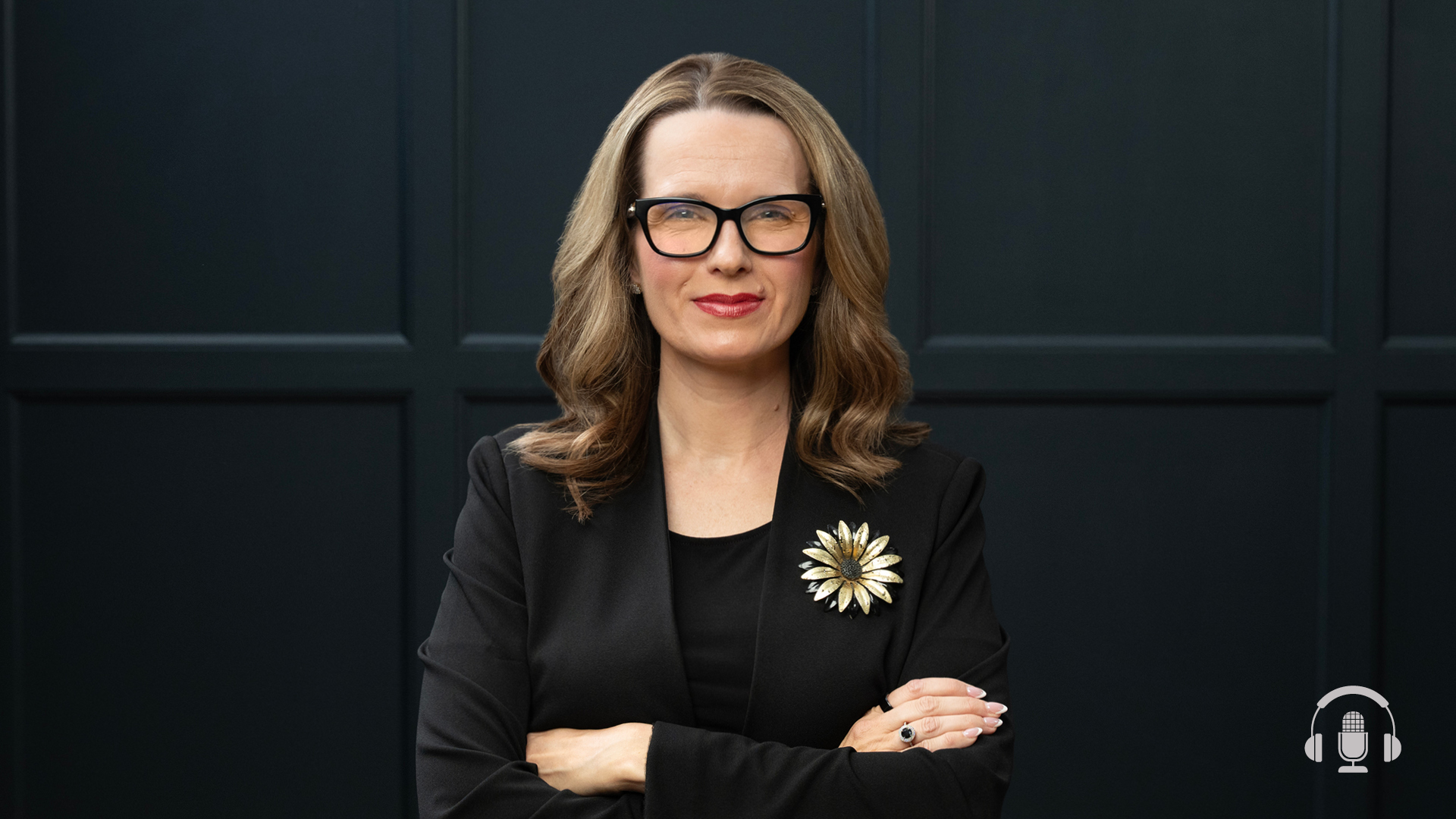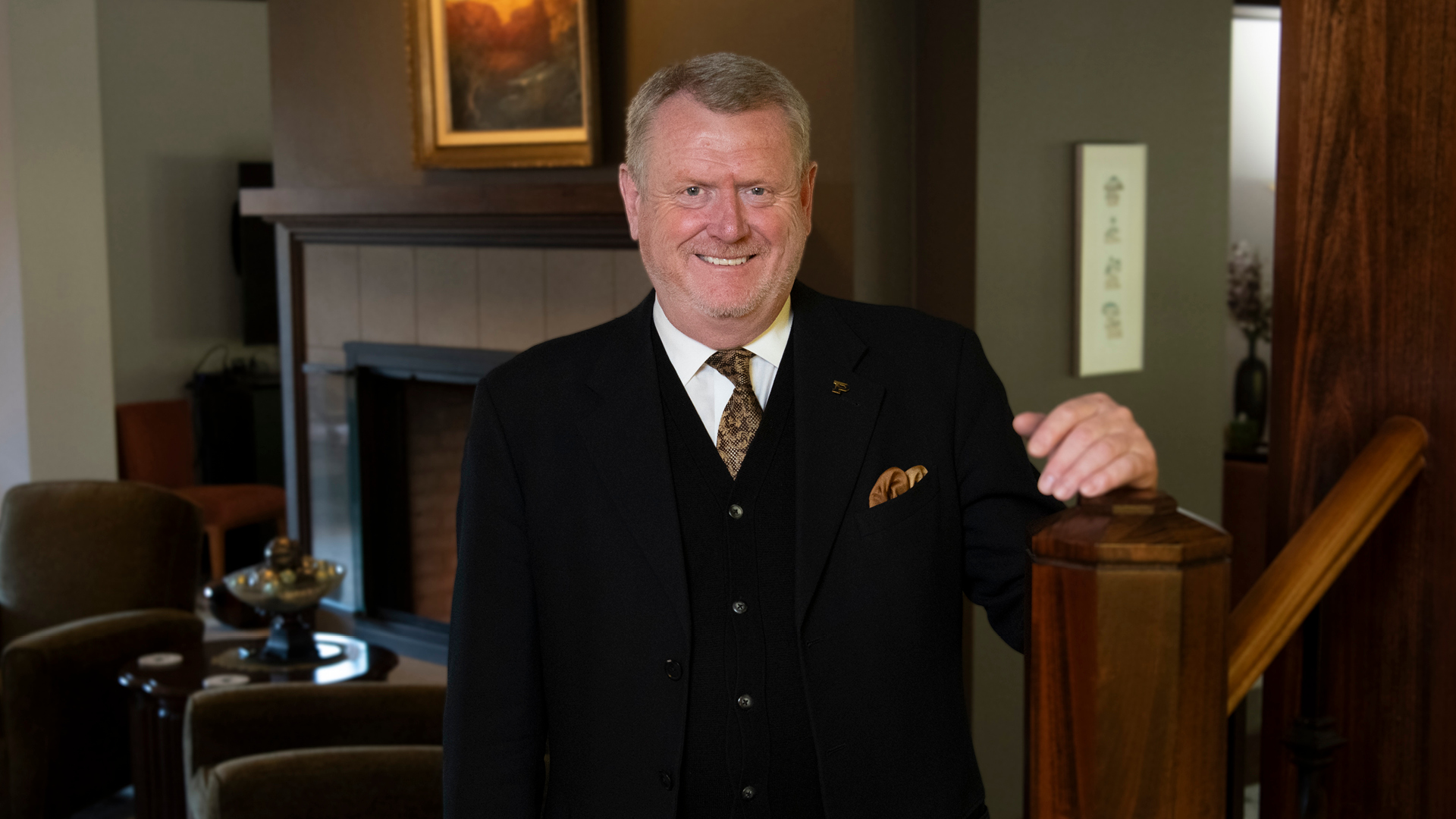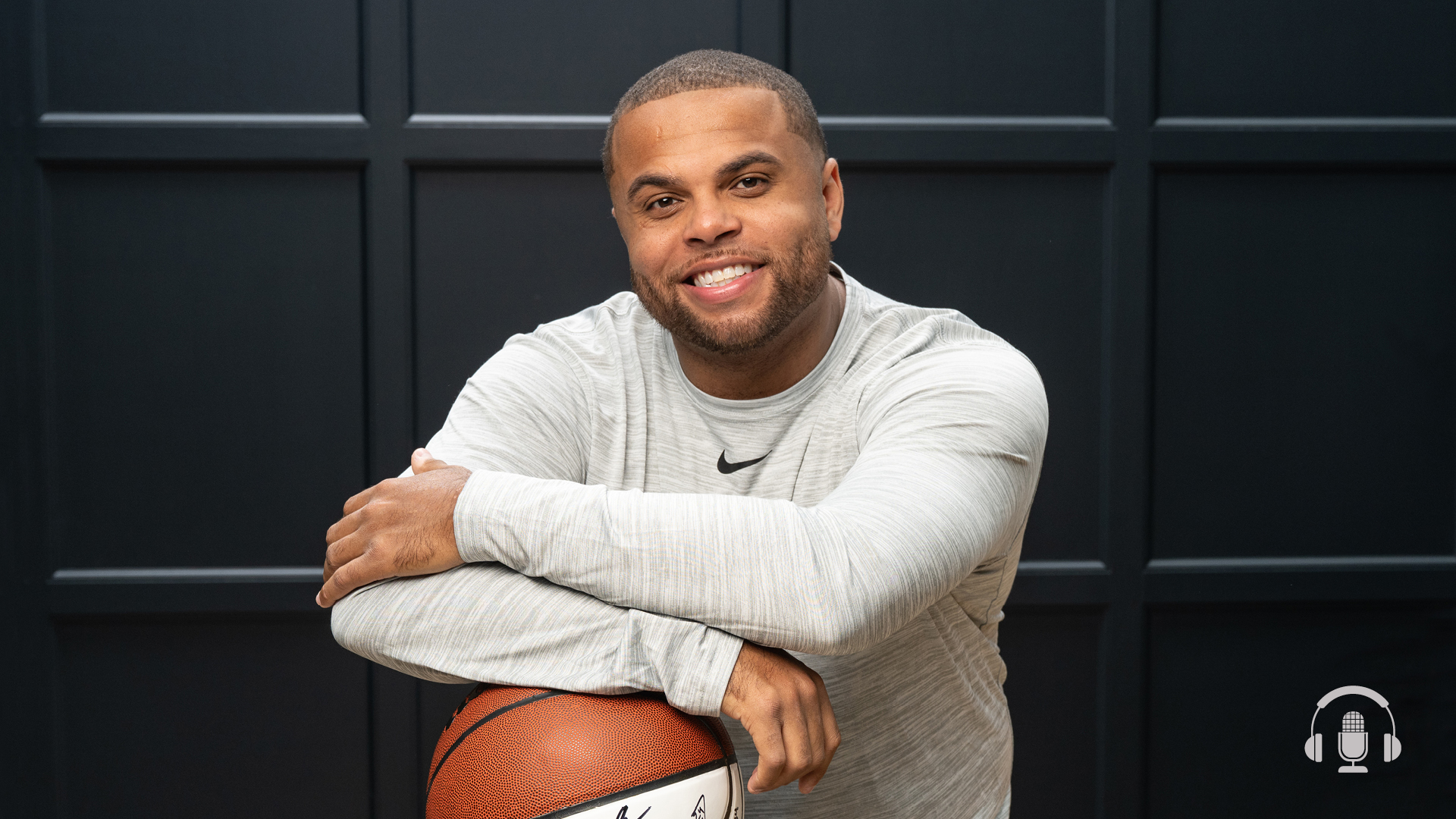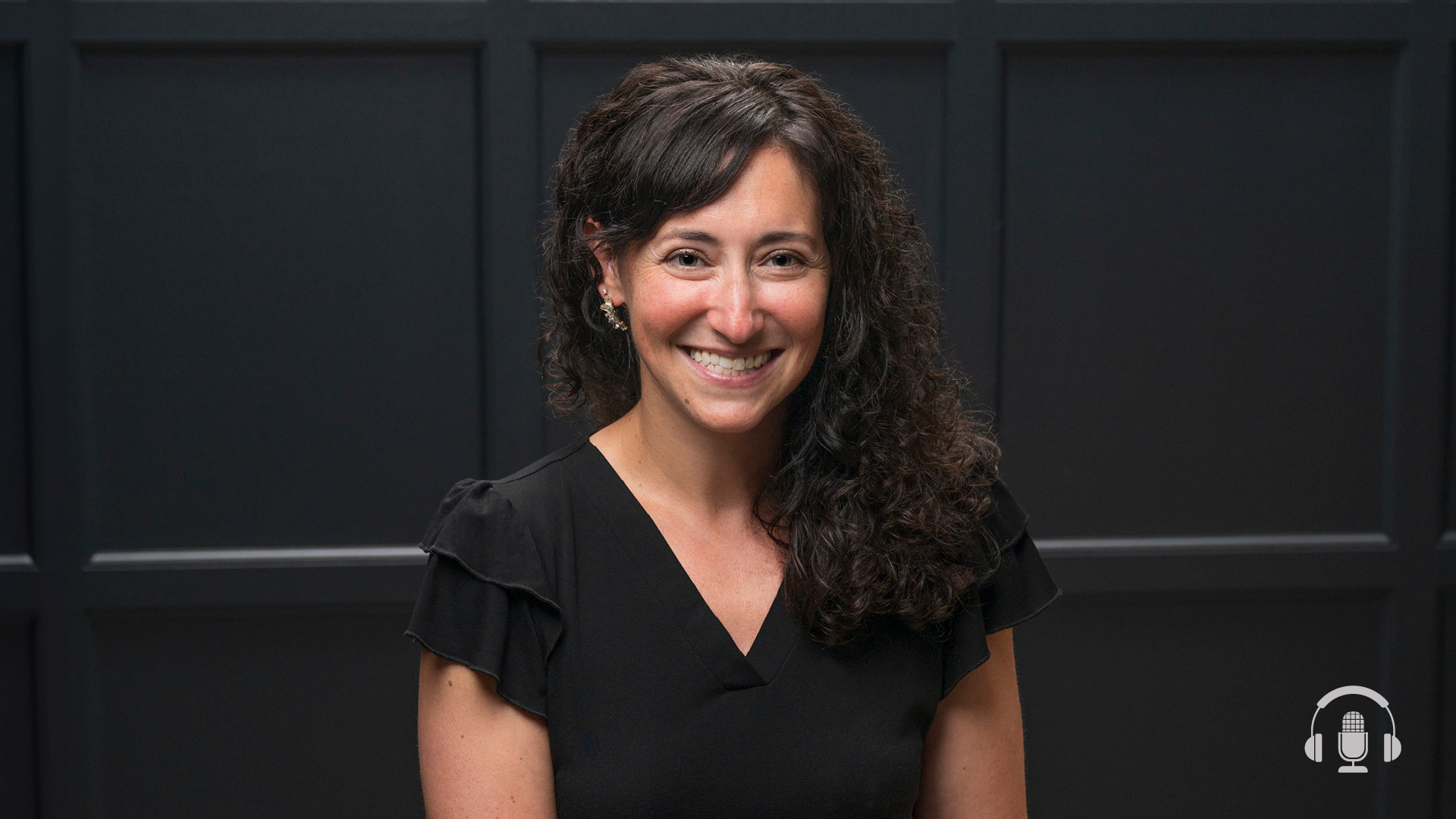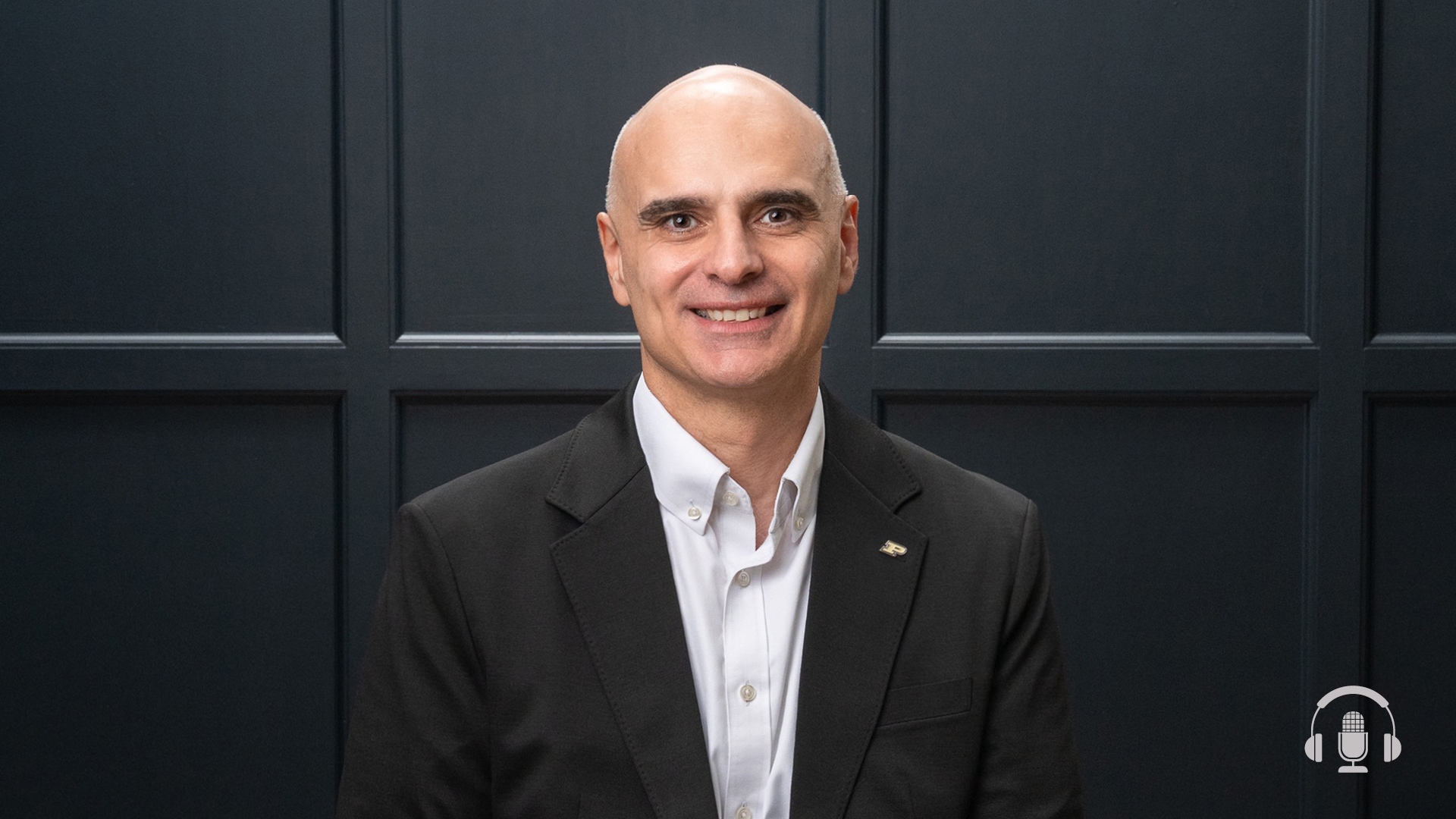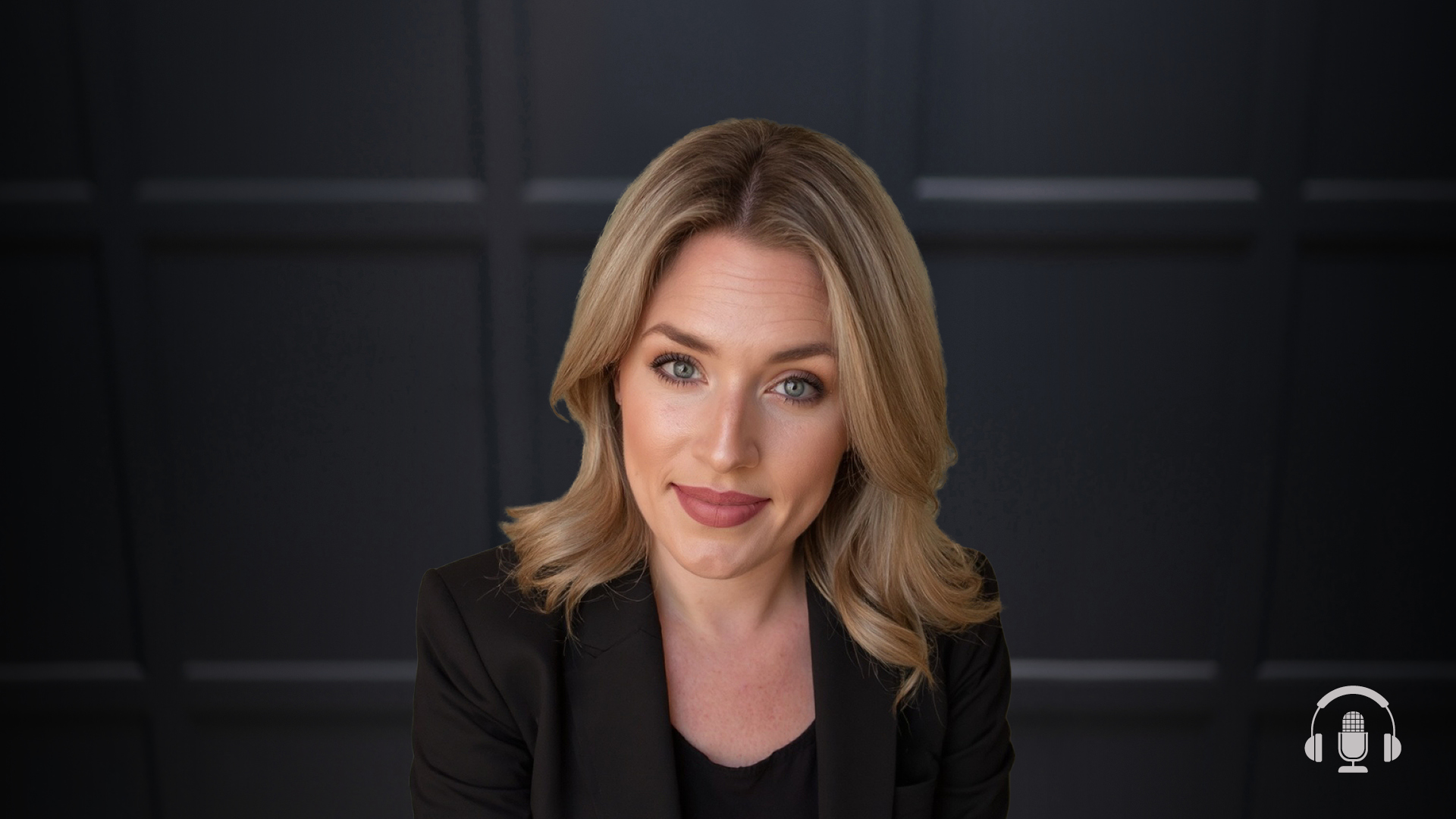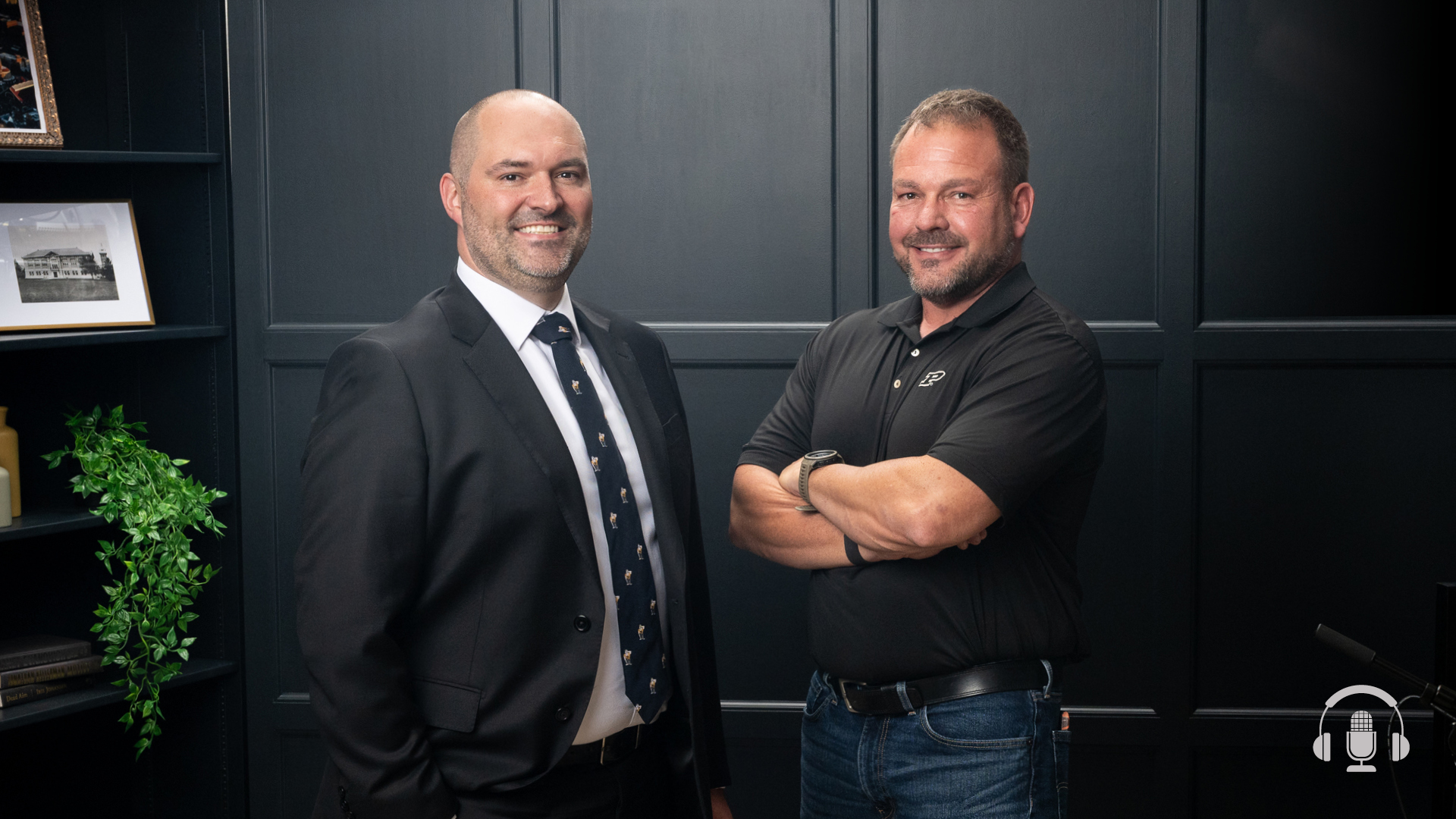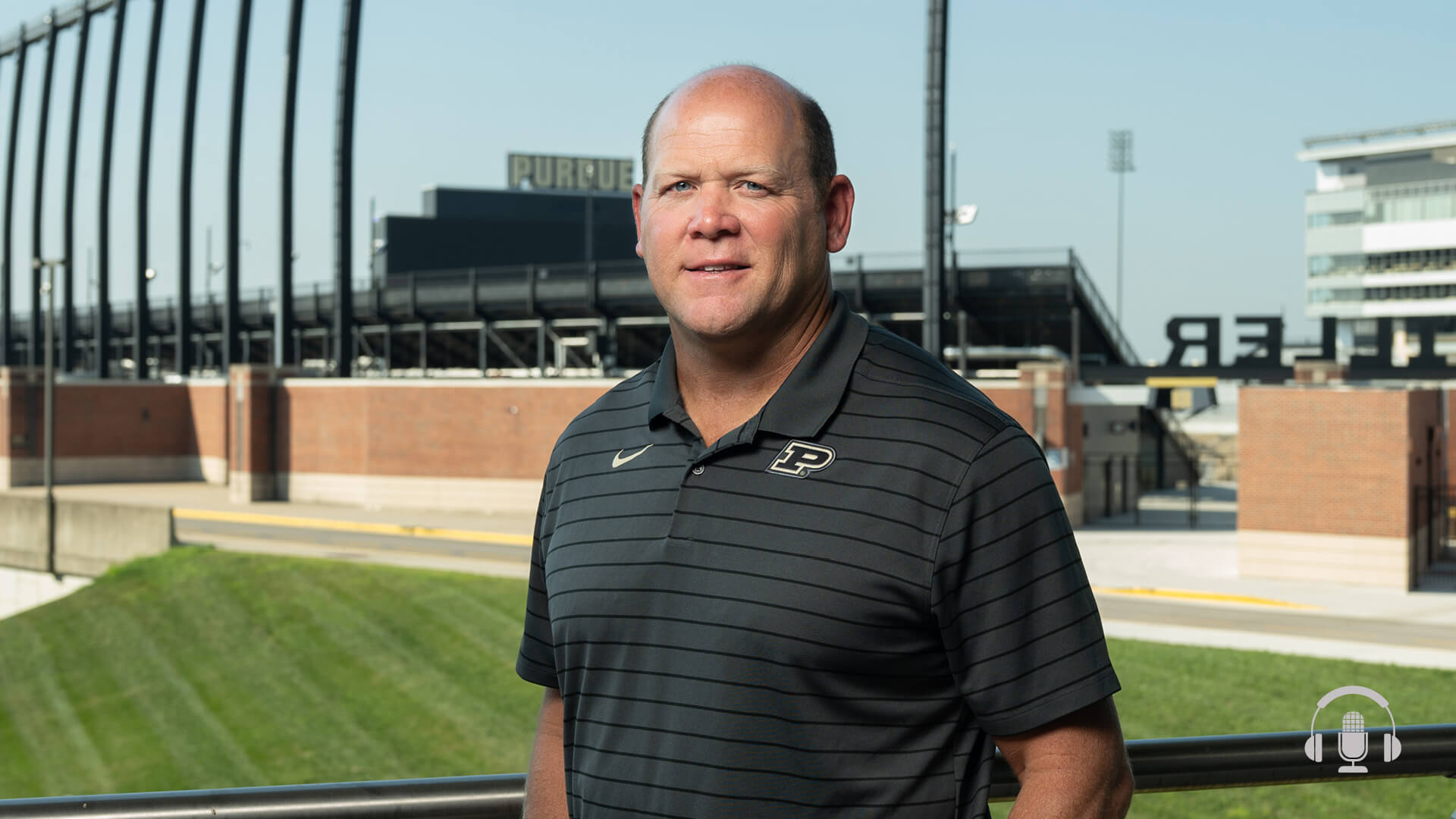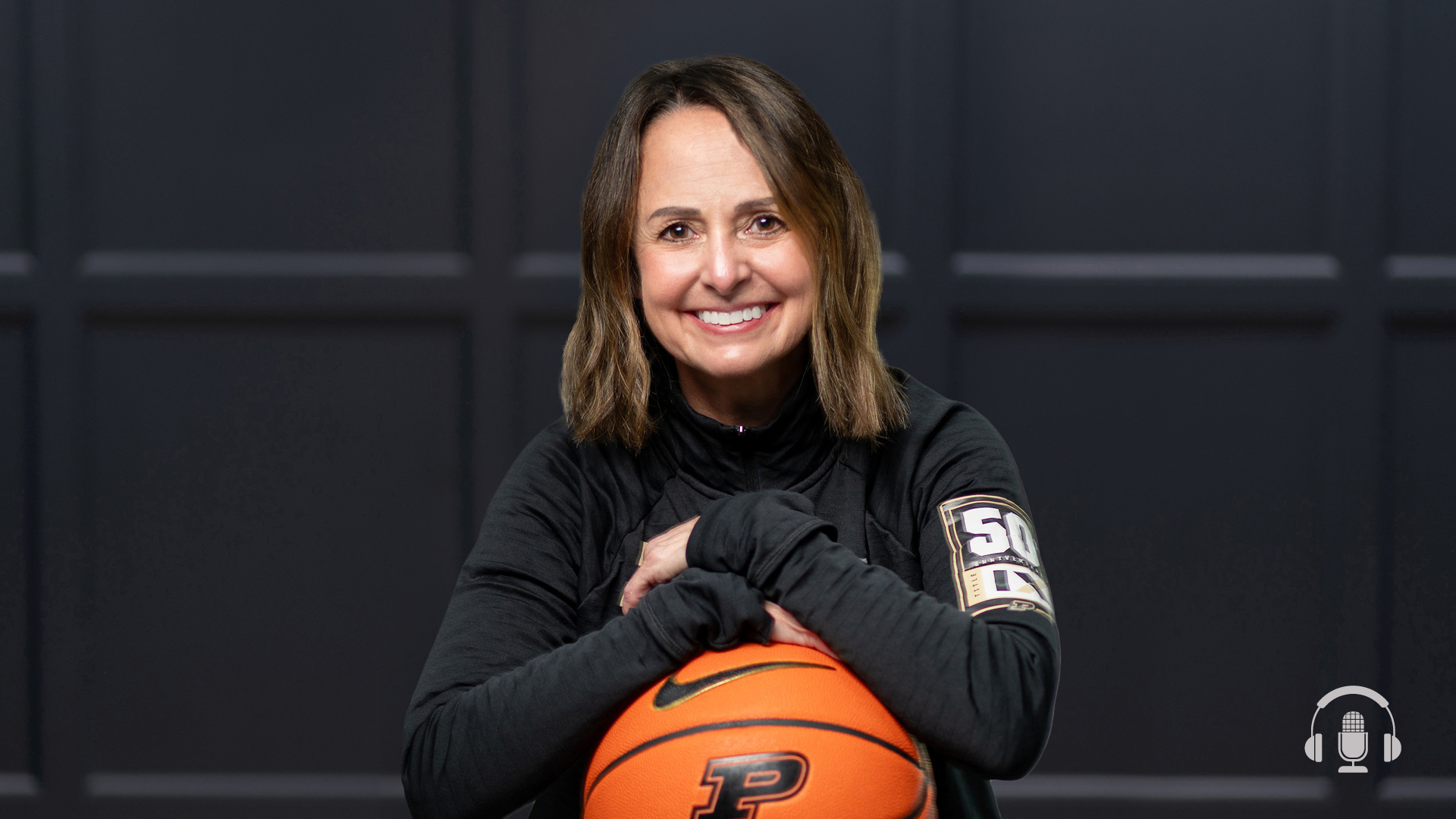Podcast Ep. 113: Purdue Research Series | A Look Into Sports Engineering and Its Impact on the Olympic Games With Jan-Anders Mansson
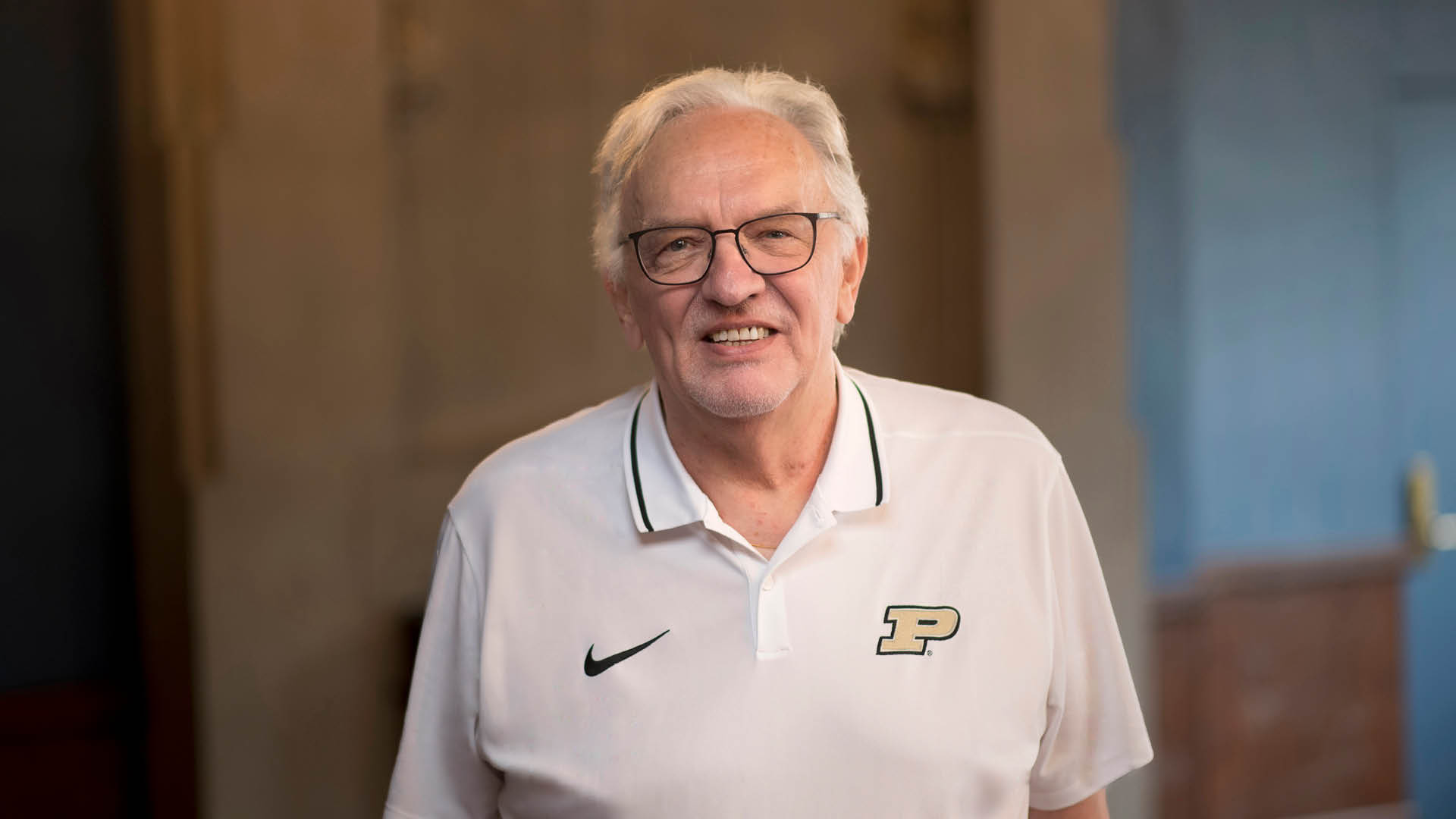
In this episode of “This Is Purdue,” we’re talking to Jan-Anders Mansson, executive director of the Ray Ewry Sports Engineering Center and Distinguished Professor of Materials and Chemical Engineering at Purdue.
Sports engineering affects everyone, from those dedicated to getting their daily steps in to the most decorated Olympic athletes. The Purdue Research Series returns to “This Is Purdue” for a second season to explore how Purdue provides practical solutions to the world’s toughest challenges. In this first episode of the research series, you will:
- Discover how Jan-Anders’ work at Purdue’s Ray Ewry Sports Engineering Center impacts the Olympic Games, the International Cycling Federation, World Aquatics and more.
- Learn the three pillars of the Ray Ewry Sports Engineering Center: maximize excitement, ensure safety and establish integrity.
- Hear about new opportunities for sports engineering at Purdue University in Indianapolis — the city known as the amateur sports capital of the world.
- Explore how sports engineering serves as a test bed for cutting-edge technologies and the dynamic intersection of fashion and apparels, electronics, and sports.
- Dive into Purdue’s contributions to the Olympics, including sustainability in 2024 and beyond, the rise of the new virtual cycling event, and the balance between innovation and athlete safety.
The research done at Purdue University continues to change the world of sports, and Jan-Anders and his team are looking forward to unlocking the future of sports engineering within the Ray Ewry Sports Engineering Center.
- Learn more about Jan-Anders Mansson
- Learn more about the Ray Ewry Sports Engineering Center
- Learn more about Purdue University in Indianapolis
- Learn more about Purdue’s work with virtual cycling
Full Podcast Episode Transcript
Jan-Anders Mansson:
I’m Jan-Anders Mansson, and you’re listening to This is Purdue.
Kate Young:
Hi, I’m Kate Young and you’re listening to This is Purdue, the official podcast for Purdue University. As a Purdue alum and Indiana Native, I know firsthand about the family of students and professors who are in it together, persistently pursuing and relentlessly rethinking. Who are the next game changers, difference makers, ceiling breakers, innovators? Who are these Boilermakers? Join me as we feature students, faculty and alumni taking small steps toward their giant leaps and inspiring others to do the same.
Jan-Anders Mansson:
I think sport has an enormous power on us. We talk about it very… We understand it. Everyone understands what it’s about when we look. We don’t understand an airplane, but we understand the sport and the equipment use for it. And here I think anything we can do to excite young people, sport is one that is easiest to reach young people with.
Kate Young:
In this episode of This is Purdue, we’re talking to Jan-Anders Mansson to kick off our 2024 Purdue research series. If you’re new to our podcast feed or maybe you didn’t catch our first season of the Purdue Research series, these special episodes tell the stories of how Purdue research impacts the world. After all, we weren’t named one of US News and World Report’s most innovative US universities for the last six years running for nothing. Boilermakers aren’t afraid to tackle challenges.
Now Jan-Anders is the Executive Director of the Ray Ewry Sports Engineering Center, and distinguished Professor of Materials and Chemical Engineering at Purdue. He grew up in Sweden and was an athlete himself after falling in love with sports at a young age, thanks to his father who is also passionate about sports.
In this episode, Jan-Anders shares how sports engineering affects everyone. From those dedicated to getting their daily steps in to the most decorated Olympic athletes. You’ll learn more about the innovative research being done at the Ray Ewry Sports Engineering Center, named in honor of the record setting track and field Olympian and College of Engineering graduate. And the new opportunities for sports engineering at Purdue University in Indianapolis.
See, there are very few programs in the country that offer formalized sports engineering education. And in this episode Jan-Anders explains why Purdue’s combination of top engineering programs and top NCAA athletics makes it a great home for a sports engineering program. Plus Jan-Anders dives into Purdue’s contributions to the Olympics. Including sustainability in 2024 and beyond, the rise of the new virtual cycling event, and the balance between innovation and athlete safety.
The research being done at Purdue University continues to change the world of sports and Jan-Anders and his team are looking forward to continuing to unlock the future of sports engineering. So let’s get to it.
Jan-Anders dives further into the background behind Purdue’s Ray Ewry Sports Engineering Center, including the Olympic Gold medalist Boilermaker athlete who the center was named after. Plus Jan-Anders shares more background about what led him to Purdue University.
Jan-Anders Mansson:
I came to Purdue in 2016 and over the first years there I also talked to the provost, the president and our dean at that time was the Dean Mung Chiang and I said, “I have my relations still going with the International Olympic Committee and I hate to give up.” And they said, “Absolutely, don’t give it up, build on it.” And that is when the idea of creating the Ray Ewry Sports Engineering Center came. Then it was Mung Chiang as the Dean at that time, now our President, and Mike Bobinski, the Head of Athletics program here at Purdue. So together then we created Ray Ewry Sports Engineering Center.
And just to give a detail, Ray Ewry is a fantastic story. He started Purdue in wheelchair as the… Had polio and this is more than a hundred years ago. He decided to train himself to get out of the limitation he had, and got to be a fantastic jumper. So in standing high jump, standing long jump and triple jump, he had the most Olympic gold medals that anyone have had until Michael Phelps had more.
Kate Young:
Wow.
Jan-Anders Mansson:
So this is the reason for the name of Ray Ewry. He was a student here and during his study time he took himself on this fantastic personal journey as well. So I think it’s a very proper name for the center.
Kate Young:
Yes.
Jan-Anders Mansson:
He’s related to Giant Leap, by the way.
Kate Young:
Yes, absolutely. That’s super interesting. So the center’s primary research focuses on sports engineering, but tell us a little bit more about that and how can it synergize with other industries. Sustainability, material science, digital manufacturing, how do those all tie together with this center?
Jan-Anders Mansson:
When you deal with sport, it’s touching many other areas. It’s both a fantastic opportunity, but also a challenge. It touches many areas and this is why it’s so fantastic to be at the top university like Purdue, where we have all these competences. Now it’s the trick to assemble those competences in the best possible way. And this is what we try to do with the center. We have experts in fluid dynamics, in new material, in information and data technology. All this are coming into sport and how can we now make sure we can assemble hubs of competences where we use that and we expose it on the field of sport?
And I think I found so much interest for it here and we should not talk just about the students. I mean I have students all the time interested to join for undergraduate or graduate work. When it come to, let’s say, emerging technology into sport, sport into technology some example that when we worked on the smart trainer, obligation of the smart trainer, of course do they measure the same thing? But there is another issue to that. Now we are dealing with a digital system, we transmit it up to the cloud, and so on, and now we run into the risk of cybersecurity. People can tamper with the signals.
So natural, we have one of the most excellent cybersecurity center, CERIAS, here at Purdue. Contacted them, they got very interested and have done a fantastic job to combine with say the equipment with cybersecurity. That was not on the horizon when we started it, but now we have a package to the International Cycling Federation and the Olympics. They love it. They say, “Now we have it under control. We know we can have a level playing field for the competition.” So that’s one example.
And then when it comes to other areas we’re working, we work with FIFA, the International Football Federation, in space and time. How do you handle space and time in a team play? Some players, they generate space for themselves, they have time to do their actions, can be basketball, can be soccer, can be football, any sport. And now with all these fantastic, the digital tools we have and machine learning and AI, we work together with people in computer science. So the students is shared with computer science. So that’s an example where yes it’s sport, but it’s not just in our center but we collaborate out where we find the experts.
Kate Young:
Jan-Anders digs into the importance of sports engineering research when it comes to other types of engineering, innovation, and technology. And this part I found particularly interesting, how sports engineering influences the design of new sports equipment and even apparel.
Jan-Anders Mansson:
If you look at different… Take aerospace, for instance, driving a lot of research. The implementation or just to adapt new technology might be 10, 15 years, due to a certification and safety of course then they use it for 20. Slightly faster is automotive driven by cost maybe six, seven years and they use it for 10 years. That technology in the core, sport adapt two, three years and they use it for two, three years. Then the new technology.
Why is that possible? Yes, the risk is not as big as is in aerospace and automotive. Even faster than so is consumer electronics. Now we are talking about years of rotating new product. We all know it from our telephones and so on. And the fastest of them all is fashion and apparel. That rotate on almost month basis. Those three last ones, sports, consumer electronics, and apparels, they grow together today. When we buy stuff that we want to have for our lifestyle sport we are doing yes, we see those three coming together. It’s about the electronics, it’s about the fashion look, and it’s about to sport.
And it’s slightly also to automotive. When we buy electrical car today we buy features. The features in the car when I was young and bought car, we bought, looked at horsepower, what type of motor, and so on. Now I know it’s more features. So it’s a fantastic dynamic area that integrates a lot of different, we say, research area. And behind aerospace is driving a lot of the research about new materials. So of course it’s very important that ingredients as well.
Kate Young:
I’m thinking when you said that, pickleball is really big now, right?
Jan-Anders Mansson:
Yeah.
Kate Young:
But then when you walk in a target, there’s pickleball apparel at the front of the store. The sport’s popularity is impacting the consumer goods, like you were just talking about, right?
Jan-Anders Mansson:
That’s a good example of how a sport can just grow from nothing within some years to be a so popular sport. Why is it so popular? Tennis is a little bit cumbersome to get into before you enjoy it. Pickleball is slightly easier, slightly smaller fields. You can have more pickleball fields on the same space that you have tennis. So I think it’s an excellent way to get more people involved in racket sports. So it’s a good example, and it’s the same in Europe. It’s really grown fantastically fast.
Kate Young:
Jan-Anders shares how sports engineering is a testbed for cutting edge technologies in areas like sustainability and nanotechnology.
Jan-Anders Mansson:
As I mentioned, when general public get in it’s many people of course it’s having a sustainability implication of it. And I think today when we deal with sport and new equipment, we have to have those in our mind. How can we produce cost-effective product that is also sustainable? And if we look at the Olympic Agenda for 2020+5, as it’s called, it’s one of the major concern is how to increase the sustainability of sport. We want sport to grow but it should grow in a healthy way so we can sustain it from an environmental point of view as well. So that is definitely sport have a lot to do still in that with recyclability of some of the products. But I think the trend is very promising.
Kate Young:
If you listen to our recent This is Purdue episode with Dan Hasler and David Umulis discussing Purdue University in Indianapolis, you know Purdue’s next giant leap is officially here. This new extension of Purdue’s flagship campus, which became official on July 1st, 2024, brings the academic rigor and research excellence we’re known for to Indianapolis. Jan-Anders discusses the importance of Purdue’s Ray Ewry Sports Engineering Center having a strong presence in Indianapolis, the amateur sports capital of the world.
How do you plan to link our world-class engineering at Purdue and those facilities, and then build upon Indianapolis’s reputation as the world’s amateur sports capital? Why is Indy such a good place for that?
Jan-Anders Mansson:
Isn’t it a fantastic opportunity? I think it’s brilliant and we should remember many university that grow, they outsource campuses to handle space and location and access. So I think it’s a natural way for Purdue to grow. And in Indianapolis, yes it’s bigger than West Lafayette, it might be easier for family to move in when one or two members need to have job. So I think there is those advantages. And don’t forget then Indianapolis is a sport mecca. Actually the first two times, not the second and the third time I came to United States was to event in Indianapolis.
Kate Young:
Oh what was it?
Jan-Anders Mansson:
That was swimming.
Kate Young:
Okay.
Jan-Anders Mansson:
So a swimming event brought me here. So it’s globally known as a capital of sport, and the capital of sport in United States definitely. We had Indy 500. We have professional sport here. We have also one of the Marian University where I have all the biking center. And Grand Park. Grand Park, what a fantastic setup. I’ve never seen anything like that that activates so many kids at the same time. So I think the environment, this spirit is the right thing Indianapolis to grow sport in. And I think that is something we can capture with the Sports Engineering Center.
Kate Young:
What doors will this new presence in Indianapolis open for both students and faculty doing research in sports engineering or studying sports engineering?
Jan-Anders Mansson:
Of course we have Purdue West Lafayette. Which is they have an enormous amount of competences. Now we have to also build up additional competence. It’s not replacing it’s additional and that combination will help to attract students and also faculty. For my own sake, I saw it as a fantastic opportunity and I was… My yes came within a couple of seconds. Of course I’d like to do it. I see the opportunity and I see the vision of our president and our school and Indiana as a whole. I see it as a huge opportunity for students and faculty.
Kate Young:
Okay, so clearly sports are something near and dear to Jan-Anders’s heart. He shares more about his childhood and growing up as an avid athlete in Sweden. Plus he discusses the time he dropped out of school at one point to pursue a career in professional sports.
So you’re obviously very passionate about sports, your whole career is sports engineering, but tell us a little bit about why you love sports. Did you play sports growing up? What brought you to this place where you’re at now?
Jan-Anders Mansson:
First of all, I jumped out of school when I was 15 and was primarily dealing with sport during a one and a half year. Realized quickly I will not be as good so I can earn money on it. So I went back to school and what was probably a good decision at that time. At that time what sport was it? It was countryside Sweden and sport is the thing you do. So it was football, soccer, you call it, it was ice hockey, it was tennis, was badminton. Was any sport I could compete in I was dealing with.
Then I had a father that was also passionate about sport and that helped to encourage my sport interest. Then during my university time I continued doing sport on more together in small team sports. So team sport I’ve been dealing with the whole time. We don’t have college sport in Europe. So team sports was what I was dealing with. And then dealing with composite carbon fiber, light material, it’s in so many equipment so it was a natural entrance into it.
But the big leap into sport came really when I was asked to lead the R&D part of the America’s Cup in Switzerland. A huge program and we were doing research. I led the research in different areas. Switzerland, we happened to win two times the America’s Cup. That was a big leap into the field. I saw the impact you could have with research in sports. And on that, and then that led into the Olympics and that led into the swimming and all the other one. Oh, it’s been an fascinating trip that came from both head and heart, let’s say like this.
Kate Young:
Millions of people around the globe look forward to the Olympic Games, the world’s premier sports competition. The Olympic Games are held every four years and are alternated between the Summer and Winter Olympics every two years during the four-year Olympiad. And Jan-Anders has strong ties to the Olympics. In 2008 he was elected President of the International Academy of Sports Science and Technology and International Olympic Committee co-founded organization linking academic institutions in sport management and technology. Jan-Anders shares more about his involvement with the Olympics and how the research being done right here at Purdue impacts the Olympic Games.
Jan-Anders Mansson:
I’ve been involved with the Olympics for the last 15 years being in their, what’s called Athletes 365, it’s the educational program. It’s a way to make sure that an athlete very easily when the career is over, they stand without nothing. We have to make sure we give them a reasonable chance to continue on an educational path. What I like here at Purdue, an American university, you combine young athletes with their education. They all integrated in the university, which is fantastic.
And I also see here we have very good performance of our athletes. So they’re academically well captured and embedded here at Purdue. That’s one thing that I work with the Olympics on. Another one is the Entourage Commission, which I participate on and off. Entourage Commission is the embedment of the athlete. So they are well treated by coaches, by the event, by the organizers, by the parents. Sometimes they can be the worst one to push your kids. And how do you embed that in a perfect way? I think that’s something that is part of the bigger picture of sport.
Then directly to sports, I’m working with International Swimming Federation that is now called World Aquatics, used to be called FINA. And there I came in to handle the difficulty we had with the world record fall that came in the end of the Beijing Olympics. Something needed be done. I came from at that time I had worked as R&D responsible at the university where were at for the America’s Cup. And that’s what brought me into work with the Olympics and also then with the World Aquatics.
That brought then into work with the International cycling Federation, UCI. That was related to how to detect if there is a motor in the bicycle. Doesn’t that sound ridiculous? We have to check so they don’t have motors in their bicycles. And that was work we did over at the university in Switzerland and now we continue here at Purdue with the UCI to have small detection system for it. That’s give a couple of example. Other sports have been Taekwondo for the scoring system in Taekwondo and so on. But many of them is about homologation. How do we set rules? And when you set rules for sport, we say now Olympic sport, we have to make sure we maximize innovation, but it have to be fair.
y certain limit we should keep it, and there should be, we say, level playing field. It should be safe and security for the athlete. We should keep the spirit of the sports and people, companies, who have their chance to earn money by being in sport. In that frame we should maximize innovation, but we can’t leave it totally free or we will end up with sports that we don’t want our kids to do. Let me give one example. The fastest way you can bike is to lay down on the bicycle, no air resistance, what they call a lying bicycles. But do we want to have your kids on a bicycle which you can’t see behind the car? No. So we have to put certain agenda to it that you say bicycles should be ergonomically correct and safe, and within that frame we should maximize innovation.
So there is a lot to think about when you have sport have impact of young people and we have to be concerned about that.
Kate Young:
It sounds like you’ve been working with athletes, student athletes, young athletes for a long time now. What does that mean to you to kind of help them, and you even guide them maybe through their Olympics experience or their collegiate experience? What does that mean to you?
Jan-Anders Mansson:
Let’s say no one replaced the coaches here. We can provide technology to the coaches. Coaches, they are in between scientists and artists. They understand the full package that an athlete, his performance, is coming in. And if we start just to put the data, it might not be the optimal. We have to work with the coaches to use new technology, sensors and imaging together with the understanding of the athlete.
So here to work in that environment is fantastic. So I would say there are three parties you have to work together with. There is the athlete, there is the manufacturing of all the equipment. They should maximize innovation. They should push limit. Then comes the federation or the Olympics. They have to make sure we have a healthy evolution of it, a safe evolution, and we keep the value of the sport. An athlete he want to keep his value, not just for one year, as long as possible. And that we have to have concern about when we develop new technology.
To add one more point to that, we’re into one of my favorite areas. Technology is very important, but it should be in the shadow of the athlete. It’s not allowed to be that the athlete is in the shadow of the technology. It’s not fair. He have trained or she have trained for years and years to develop skill and capability, and we should not then talk about which swimsuit they use. Which brand of swimsuit. No, it’s the athlete that is good.
Kate Young:
How does your research and technology ensure safety for not only the athletes, the Olympians, but also spectators? And can you talk a little bit about the latest innovations in that field?
Jan-Anders Mansson:
Safety is definitely an issue of many ways. Physical safety and mental safety of the athlete. And physical safety, as I mentioned earlier on, excitement, how do we get people to come to event? Some event we want to sit there and say, “Oh, he made it.” Or she made it. “Oh, that was just on the limit.” We want to see that, we say pushing the limit, be just on the limit.
Normally what that means we also, on the other side, we have risk. Take downhill skiing, which we love to see when it’s go really fast, but they have their life on the risk. We like to see big tackles in many sports, but the athletes get stronger, they get faster, they get bigger. So the impact gets stronger. And sometimes that is where we have to look to both ruling but also look into we say a safety equipment we can use. And then when we talk about the event, yes, I think it’s not the biggest risk today if it’s serious event. I think there it’s more about the event’s going to be, we say, environmentally defendable the way we are doing that.
Kate Young:
In June of 2024 Indianapolis hosted the US Olympic team trials and swimming for the first time since 2000. Two Olympic-sized 50-meter swimming pools were constructed inside Lucas Oil Stadium marking the first time an indoor pool has been constructed in a venue of that size. And would it surprise you that four Purdue graduates helped facilitate this massive project?
On top of that, Purdue University partnered with Indiana Sports Corp and USA Swimming to present USA Swimming Live. A nine-day outdoor fan fest and tailgate hub during these trials. Now, my personal favorite highlight of this outdoor fan fest was the Taylor Swift night, complete with the best T-Swift tunes and handmade Boilermaker friendship bracelets.
But okay, I digress. Jan-Anders was there in Downtown Indy to share more about his vital role in this year’s Paris Summer Games. He serves as the Chairman of the Approval Committee for the World Aquatics, which is responsible for inspecting swim materials used during the Olympics. Jan-Anders discusses his work with World Aquatics and why sports engineers are pivotal, especially in a sport like swimming.
Jan-Anders Mansson:
So swimming, and if you take swimming and we take cycling, just as an example here, in cycling 70% up to, more than 70 sometimes, is air resistance. So aerodynamics is very important. In swimming, you’re in water, it’s even more important, the resistance the body having water. So of course with the swimsuit now you can influence that resistance in many way. And what happened in 2009 when we within half a year have totally free fall of world records was a new type of material in the swimsuits.
Swimsuit that was highly elastic. It was like an elastic corset. It really packed the swimmer into a shape that was a dolphin-shaped, maximum shape for minimum resistance in water. It also gave extra muscles, so to say, that elastic force helped to keep the body horizontal. When you get tired in swimming, your body start to sink down and you’re plowing water, and that’s catastrophe.
And then of course when now it was created kind of a plastic wrap you put around you could have air inside and now the buoyancy you float higher. So that had brilliant innovations that came across there by some companies. And it’s important to say there’s no one to blame here, it’s just that the Federation we should be proactive, we should before we have this situation we have there. I think that was materials that really made a huge difference in it, and we had to… That was my role then to put together a homologation system for the swimwear so we get it to a healthy level again, to keep integrity off the sport.
Kate Young:
And highlight a little bit about that incident for our listeners who might not know about it, what happened in 2009 with those new swimsuits?
Jan-Anders Mansson:
We say in general the record evolution over four years, if you have no equipment involved, is about 1% every four years. It’s an average. Then by the way, it’s higher for women. There’s more women in professional sport today. But if there’s an equipment involved, it’s up to 3% over four years. Record evolution. Swimming was considered to not be an equipment sport. But what we saw was that during the Olympics 2009 in Beijing and 2008 and then 2009, the World Championship, we had 43 world record within one event. So it was just total change of the whole playing field.
Something had to be done to control it. Why do you need a control it? Now you have to think about the previous athlete, the one that was a star one year ago. He was worth nothing today. So we have to respect of the whole chain of athletes that do a sport. And we should have technology in, we need new technology, but it have to be in a smooth way.
Those changes that was made for that, the man suit went from full body suit to just a jammer, and the material have to be a textile, not a plastic wrap called the polyurethane suits. And we came back to the normal record evolution again. It was let’s say a turbulent time, very turbulent. There was a lot of companies that didn’t like what we did. The Federation did to keep the value of the sport. But the athlete loved it. They loved it. For now they say they were in the focus. We were not saying how many world record did that company have, and how many world record… Now we talked about the athlete.
So it was a very turbulent time for me as well at that time. But we got it right and it took about one year to change the rules. And now of course we had a new records were not as good as they were the year before. So now we had a record vacuum for almost 10 years, which is not good. When you have a record vacuum, you don’t end up on the first page new world record, it doesn’t happen. But since the three, four years nearly all world records are back again to be set. And that’s very… But once again, it’s a matter of being proactive and this is what we can do by having technology and engineering understanding for what’s going.
Kate Young:
And going along with our swimsuit storytelling here. How does the research and the testing of swimsuits at the Ray Ewry Center impact the sport overall?
Jan-Anders Mansson:
So we have done different… In combination with World Aquatics. We have looked at different issues of it. We have looked at recyclability of swimsuits, which is an issue today. We have looked at the coating that is used on the swimsuit that is not the most environmental friendly all the time. And then another area have been to study this permeability, as we call it. How water can penetrate through the swimsuit and not give buoyancy. And a fourth area we worked with is on wetsuit. In open water swimming and triathlon they use wetsuit. Could be for two reasons, either it’s too cold, the water, so they need to have it. And when they have it, normally they like to have wetsuit for they float higher and you swim easier.
But now we have to decide how that’s going to be constructed to have the right temperatures. The risk is if you get overheated, there’s a health risk with it. And the simulation of that is work we have done here and presented for the World Aquatics. And there have been some tragic incidents where swimwear had got overheated more than actually in cool down. We have to be concerned about this.
Kate Young:
So Jan-Anders has mentioned cycling a few times throughout this interview. And Jan-Anders and his Ray Ewry Sports Engineering Center team have been working on something called virtual cycling. An event in which competitors can participate from any physical location as long as they have the necessary bicycle internet connection software and smart trainer equipment to meet their fellow competitors on the virtual race course.
This team has been collaborating with the International Olympic Committee and Cycling Federation to tackle this sports engineering and cybersecurity issues so that the virtual competitive environment is both fair and secure. And virtual cycling could become a full-fledged medal event alongside traditional cycling events in the 2028 Los Angeles Summer Games. Jan-Anders explains more.
Jan-Anders Mansson:
So this was very much coming in the wake of the pandemic. No cycling event was held, so we say why don’t we have Tour de France Virtual, and we have Giro d’Italia Virtual, we have some of the classic racing virtual. Tour de France was the first one. And start to see the one that used the certain trainers they always won. So the different trainers were not measuring the same thing. There was needed to be an homologation of it before it can be an Olympic sport. Olympic sport it have to be level playing field.
So we saw an opportunity here to develop a whole testing system for virtual. And the trainers, small trainer, that hook up to the back wheel. And we did that together with the International Cycling Federation. Been very successful. And this is now planned to be an Olympic event in LA ’28.
Can you imagine the excitement here? You have a hundred bikers on the stage, professional, they are biking to win. The same time you can have five million at home competing against them. It just take the whole Olympics home to the living room. I think that is one advantage of it. And let’s say the work that I’ve seen a couple of engineers had at the Ray Ewry Sport Engineering Center, what fantastic work they have done. And UCI have now said you are the one that’s responsible for all homologation of trainers for our event. That’s definitely put our sticks down as a center for sport in Indianapolis.
Kate Young:
Can you picture that? Hundreds of cyclists on the professional stage and millions at home competing as well. And it’s all in large part thanks to the research happening at Purdue University. Jan-Anders shares more about why sports engineering is something everyone, both competitive athletes and people who exercise regularly, should pay attention to.
Jan-Anders Mansson:
There is different… I must say is three dimension of sports. I always say we have to be gold, silver, and bronze when we deal with sport. There is a meaning we joined there. One is the entertainment value. Something that makes us watch it. We go there and we talk about it and it’s part of the life. Then there is the lifestyle space. Lifestyle space is comradeship, doing thing on the weekend, going on trip, doing something that is with sport related that engages people. And then the third one is societal impact. If we can motivate people to do exercise, yes, people bike to work, they walk instead of taking the call. We have a lot of things we can inspire by this by doing say the entertainment and lifestyle and society.
But if we’re going to make that work, we have to communicate it. And communication of, we say storytelling around sport, is very, very important. That’s how we reach out with it. And here at Purdue we have fantastic group in communication that I have shown a lot of interest and I’m very encouraged to have what we’re doing. So that’s not mechanical technology, but it’s communication and that side of science that is coming in as well.
Kate Young:
And how do you think sports engineering has something for everyone? There’s competitive athletes, there’s people like me who like to get 10,000 steps a day, but I’m not a professional athlete. People who might play in rec leagues as adults. Why is there something for everyone when it comes to sports engineering?
Jan-Anders Mansson:
I think sport has an enormous power on us. We talk about it very… We understand it. Everyone understand what it’s about when we look. We don’t understand an airplane, but we understand the sport and the equipment used for it. Here I think anything we can do to excite young people, if we can get young people an alternative to just be on the street, it’s great. And that I see what tools does the society have? Yes, they have a culture. There is religion. There is different type of sport and communities.
Sport is one that is easiest to reach young people with. We should then make sure we have an emphasis on sport that’s related to health and good life. But it have to be with good integrity, otherwise we would not get the right people.
Kate Young:
And how do you hope your research and research being done here at Purdue can kind of get the younger generations involved and impact them, at the end of the day?
Jan-Anders Mansson:
This is my big goal. And as I said, we have to think to join the gold, silver, and bronze just a competition. I think that’s going to be very important for a sports center and that is where we interact with the people in some of the department here that more work on the health side of sports. And we know if you have a healthier living and sport is part of that, it’s a fantastic way to reach people. Instead of telling them to go to therapy or something like that.
And here we see now if you go into many of these training centers for sport, it used to be equipment to train that specific sport. Today it’s more say proactive. How do I train my body right to do the sport? I talk about rehabilitation, and now pre-habitation to do it in advance. And I think that side of sport we have to see, we will see more of it and it’s more part of the health side of sport as well. So we don’t need to have so much injury and rehabilitation going on as we have sometimes today.
Kate Young:
How do you envision the future of sports for athletes, but also for spectators who love watching football every Sunday, or checking out the Olympics, watching tennis?
Jan-Anders Mansson:
That’s a big question. I see we have fantastic new tools available today with all the smart sensors. Sensors that we can have in our apparel, sensors we can attach to the body. We have sensors in our watches. All that gather information. So now we have more data than we can think of. Now the trick is how do you make all this data exciting for the audience? So that’s one thing to get more information about the athlete.
Then there is also if you say you watch basketball, the guard go up and you show two fingers and he do some sign and they know what they’re going to do. Can we start to get more information about the inside of the game? The more inside of the game, the more excited we get to watch it. And we see that we can be more professional watcher than just looking for some one, two specific events that happened during the games.
I think there we have… And if you look at Purdue, what a fantastic school in this kind of area. So we have a lot of the ingredients to put together new opportunities here.
Kate Young:
What do you think would happen if Purdue wasn’t doing this sports engineering research?
Jan-Anders Mansson:
I think I will still have done it myself. My driving force and belief in it is been there for so many years. I still think the power in it. And I just see the class I’m teaching, and now we are starting the professional Master in Sport Engineering here. The first one in the United States. There for the students got the undergraduate, they come directly to the class fill up, immediately… I was dealing with that today, that we have over-full class. So it’s something that attracts the young people. And when you teach it in the context of sport, normally when if you go in and teach, we say about airplane engine or something like that, the professor is the expert. You go in and teach about cycling, the student is the expert. So now you have a very executive type education. It’s an exchange of information, and this is very stimulating to work in.
Kate Young:
Absolutely. We started the episode talking about giant leaps with Ray Ewry. What is your giant leap for your research coming up in the future?
Jan-Anders Mansson:
There is a giant leap, but it’s very short. It’s coming very quick, moving the Ray Ewry Sport Engineering Center and the related composite into Dallara in Indianapolis. Dallara is a deep place for motor sports, and we are now going to move there, which is a fantastic opportunity, which I’m really looking forward. That’s going to happen within this year.
If I see long-term, what is the big thing that is on the horizon? We have had a tendency to develop the equipment around sport, depending on how stiff it is, how light it is, and that is not the goal anymore. It’s more to adapt it or personalize it to the person. We have different response system, cognitive response system. How can we start the design equipment after more what we call neuro-engineering the sport equipment. And then we have all these 3D printing possibility to personalize the equipment. I think there is a fantastic opportunity in the coming years.
Kate Young:
Is there anything I missed that you want to share with our listeners?
Jan-Anders Mansson:
No, I think I’m very happy with your questions actually. That definitely hit the right side of sport, both the professional and the societal impact of sport. So I’m very happy for this.
Kate Young:
Oh, thank you. Well thank you for joining us. It was a pleasure.
Jan-Anders Mansson:
Pleasure for me as well. Thank you.
Kate Young:
Our podcast team was so excited to debut our 2024 research series with Jan-Anders. Stay tuned for more episodes of this series over the next few months. If you’d like to learn more about the research happening at the Ray Ewry Sports Engineering Center, please visit Engineering.purdue.edu. And if you want to read Purdue writer David Chiang’s, full story on virtual cycling, head over to the Persistent Pursuit at Stories.purdue.edu. Be sure to follow this is Purdue on Apple Podcast, Spotify, iHeartRadio, or wherever you get your podcasts. And don’t forget, you can watch our interviews on YouTube as well.
This is Purdue is hosted and written by me, Kate Young. Our podcast videography for this episode was led by Ted Schellenberger in collaboration with John Garcia, Zach Mogensen and Allie Cheney. Our social media marketing is led by Maria Welch. Our podcast distribution strategy is led by Theresa Walker and Carly Eastman. Our podcast design is led by Caitlin Freville. Our podcast photography for this episode was led by John Underwood and Greta Bell. Our podcast team project manager is Rain Gu. Our podcast YouTube promotions is managed by Kierstin Bauman. Additional writing assistance is led by Sophie Ritz. And our This is Purdue intern is Caroline Keim.
Thanks for listening to This is Purdue. For more information on this episode, visit our website at purdue.edu/podcast. There you can head over to your favorite podcast app to subscribe and leave us a review. And as always, Boiler up.
